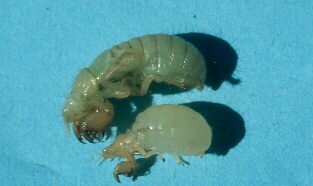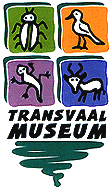
E - MAIL
Collection manager (Invertebrates)
Preparator
LINKS
Visit the site dedicated
to the locally infamous
Entomology Links
Identification Fees
Collecting Permits
Transvaal Museum index
Department of Invertebrates
General Entomology Collection
Order Hemiptera
Family Cicadidae (Sonbessies)
CICADAS of South Africa Poster (For sale at Museum) click
Checklist of Cicadas in South Africa click
Cicadas include some of the world's noisiest insects, producing calls that can be heard up to 1.5 km away. They have short antennae, and prominent eyes set far apart. Only the males sing, using a pair of drum-like tymbal organs located on the sides of the abdomen. Females lay eggs by cutting slits in plants; after hatching, the nymphs feed on roots underground. Some species can live for up to 17 years.
|
|
|
South Africa’s largest endemic cicada found in Mpumalanga
Rediscovery of the cicad Pycna sylvia (Distant, 1899): including behaviourial
and ecological notes for the species (Hemiptera: Cicadidae)
C. Malherbe, M. Burger and R.D. Stephen
Pycna sylvia Distant is the largest cicada endemic to South Africa, and was collected and described by Distant in 1899 as Platypleura sylvia.
Sound (wav file) - (Pycna sylvia)
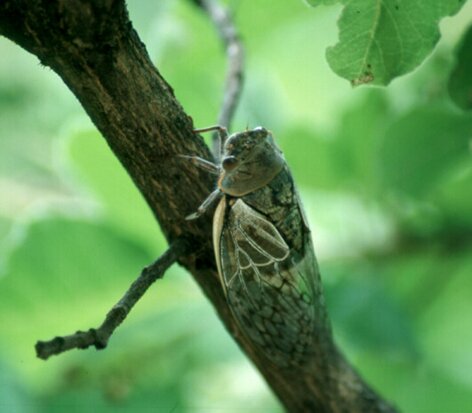

Pycna sylvia Cicada sucking the juices of the plants
According to Distant (1899) this species has a distribution limited to the Transvaal (now Mpumalanga) and he thought that such limited distribution was improbable, but no contradictory evidence had been found to date (2003). In fact, this cicada had not been collected since 1906. According to the IUCN Invertebrate Red Data Book definition, an invertebrate is classified as “extinct” if it has not been collected in the field for 50 years. There had been no records of collections of this cicada for 95 years and it was assumed that South Africa’s largest endemic cicada, was extinct. The discovery of several populations of this cicada species is therefore quite an exciting find. The cicada was collected in a remote valley in Mpumalanga in November 2001. During a follow-up survey, the distribution of the cicada was found to be larger than originally anticipated and was found in the adjacent valley and in a nearby area alongside a regional road. The determined distribution range is localized, but within this range, the cicada seems to be locally well established. Pycna sylvia prefers riverine vegetation and closed bushveld with a high dominance of the woody plant Vitex obovata subsp wilmsii.
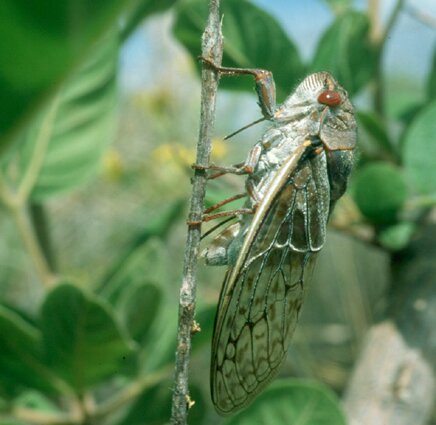 |
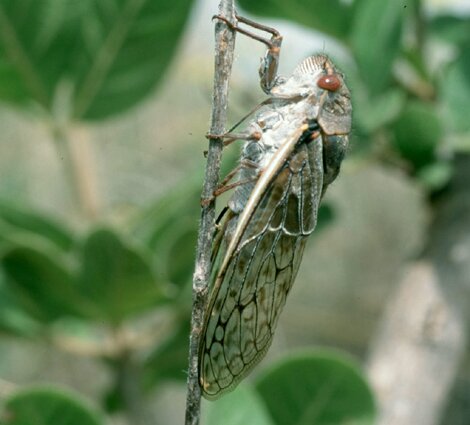 |
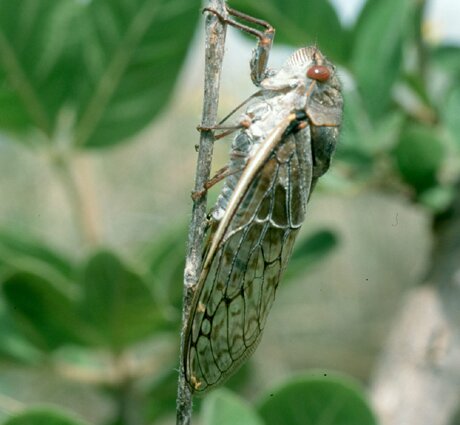 |
 |
Pycna sylvia laying eggs (M.Burger)
References
-
BREDENKAMP, C.L. & BOTHA, D.J. 1996. FSA contributions 7: Verbenaceae: Vitex. Bothalia 26: 141 – 151.
-
DISTANT, W.L. 1899. On Two Undescribed Cicadas from the Transvaal. Annals and Magazine of Natural History Series 7 Vol iii.
-
WELLS, SM, PYLE, RM & COLLINS, NM. 1983. The IUCN Invertebrate Red Data Book. International Union for Conservation of Nature and Natural Resources.
Acknowledgements:
Transvaal Museum Staff that assisted in the fieldwork.
Dr Martin Villet for confirming the cicada identification.
Mrs Christien Bredenkamp for confirming the plant identification.
SRK Consulting and Anglo Platinum for the opportunity to survey the area.
